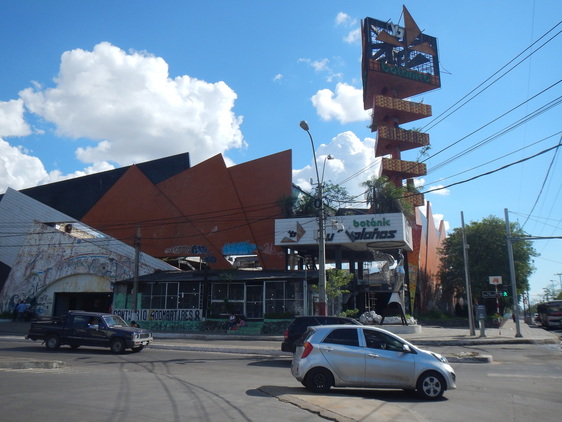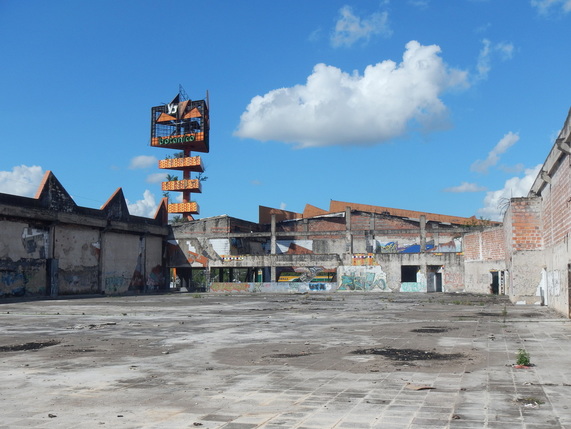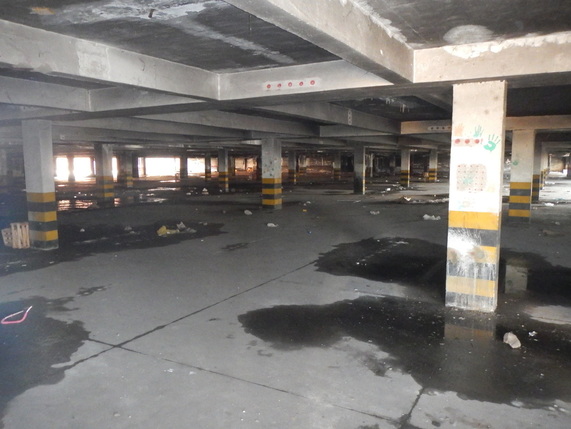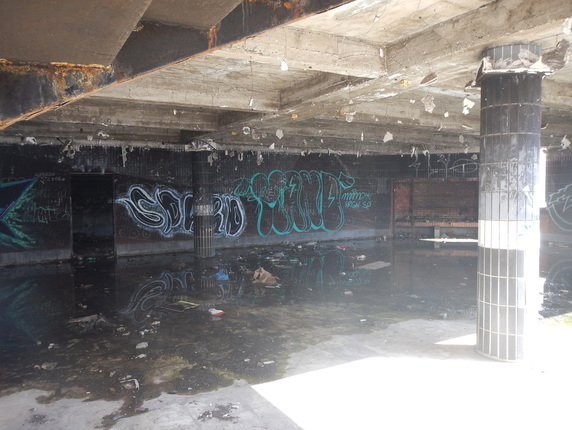|
The first time I heard of Paraguay was in tenth-grade history class. After being assigned the task of researching preventable disasters and exploring strategies for avoiding similar tragedies in the future, one classmate presented on a little-known corner of the world: Asunción. A fire in a supermarket had killed almost four-hundred people, largely because there were few fire-exits incorporated in the design and, at the outset of the fire, the front doors had been locked by a security guard to prevent theft. After discussing the horrifying case with my class for a few minutes, I promptly forgot about the blaze; Paraguay’s largest peace-time disaster was relegated to the deep recesses of my memory. Then I moved to Asuncion. Within a few weeks of arriving, the local newspapers filled with stories and features highlighting the tenth anniversary of the tragedy. I learned about the victim’s families’ search for justice and the ensuing court cases that led to the imprisonment of the supermarket’s owners, a security guard, the architect and some minor municipal officials. Protestors ten years later still felt cheated by the light sentences handed to those responsible. The papers were packed with photos and charts outlining the blaze itself and the derelict building as it now stands – a hulking, burnt-out testament to hundreds of lives gone up in smoke. I’ve wanted to visit the ruins of Ycuá Boleños since I first drove past it during our first week in Paraguay. My penchant for wandering through abandoned places has been strong since my early teens (and has, coincidentally, gotten me in trouble on a few occasions) but, seeing as how visiting the wreckage of a horrifying disaster hardly qualifies as a romantic date with my beautiful wife, the adventure never materialized. Until this week. Paragraph. Haz clic parked my car a block away from the building and walked straight through what used to be the main entrance. There is a barred-off memorial with grainy photos of the victims, weather-worn personal belongings and droopy plastic flowers that is inaccessible except, perhaps, on special occasions. I passed a simple metal plaque containing the names of all 396 victims plastered onto the brick façade as I climbed the broken stairs up to the main level. Apart from several homeless natives and a small band of super-sketchy young men sporting haunting facial tattoos[1], I had the place to myself. It was odd how normal the place felt – no different than any other abandoned building I have visited in the past. I think I was expecting some sort of indefinable, creepy vibe but I didn’t find it there. As I wandered through the offices where the order came to close the doors, skirted past what used to be the food court where the fire began, explored the carniceria where dozens sought refuge in meat-refrigerators in a vain hope that the cooler temperatures would help them, I couldn’t help but think, “Why am I here?” I started thinking. Occasionally, when I start thinking, I stop having fun. That was the case here. I left when I began honestly considering my motivations for going; I wasn’t paying my silent respects at a memorial. I felt more like a voyeur, peeking in on something I could never be a part of and never fully understand. I was reminded of visiting the cremation pyres in Kathmandu, Nepal and I remembered the unique smell of burning flesh. It was time to leave. As I left the abandoned supermarket-shell, I felt guilty in a way that I still can’t explain. I’m still trying to answer the question for why I went, and why others go, to monuments of unspeakable horror like Ycuá Boleños. What compels humans to visit the sites of mass human suffering? How closely should I examine my motivations for exploring these kinds of places?
Although I’m glad I went, in a way, visiting the wreckage of the Ycuá Boleños supermarket made me supremely uncomfortable with myself. It will be filed away with other experiences I’ve had internationally where my thoughtless moral assumptions and motivations have been challenged unexpectedly. It is often these experiences that result in the most learning over time though…hopefully I’ve learned yet another indefinable lesson with this one. [1] I openly admit that I became frightened when two of these (probably hardened gang-members) dudes started following me around the complex. I tried to avoid them and head for the exit but they cut me off and walked up to me. The following stream-of-consciousness monologue is an attempt to summarize my thoughts as they strolled towards me: “Damnit Jon, what have you done? Why do you always put yourself in these dumb situations? You’ve never been robbed when Danielle is around…the problem is obviously you doing stupid things! They’re coming closer. They are coming for me. No doubt about it! The dude on the right tattooed his whole face in to look like a skull…does that mean he kills people? I hope he can’t hear my heart beating. He’s putting his hand in his pocket!!! I hope he’s the type to ask for my phone rather than shoot and then take my phone. Oh, Lord, I hope this is quick. Wait, he’s still empty handed. He’s reaching out his hand and…. asking where I’m from and smiling?!? He hopes that I like Paraguay? He hopes I have a good day? Well that was an overreaction!” I continue to be surprised by Paraguayan hospitality and friendliness…even from the ones who, if you adhere to the stereotypes, look like they would murder you without a second thought!
0 Comments
Leave a Reply. |





